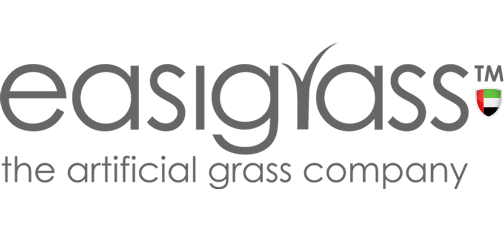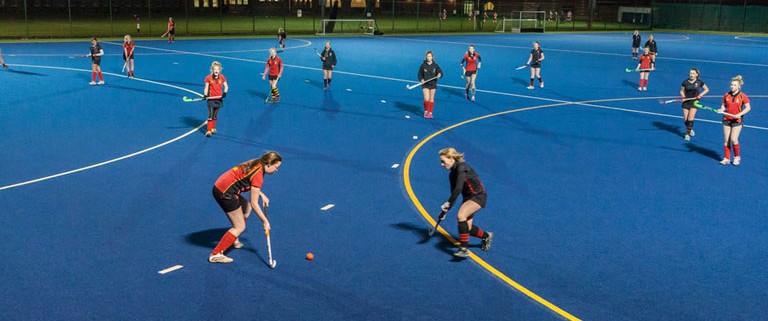Artificial Sports Grass in Dubai
The heated debate regarding the benefits of natural grass compared to artificial sports grass has been stirring for years now. Nobody can say that Dubai residents don’t take their favorite sports seriously! From football to rugby to hockey, every sport played on a field relies upon a solid grass surface.
While each opposing side of the grass-or-turf controversy has made its own valid points over the years, new technological developments recently helped to declare artificial sports grass in Dubai as the clear winner in sports surface management.
Artificial grass defined
Artificial grass, also known as synthetic turf and artificial sports grass and astroturf, is a grass-like surface created out of synthetic fibers. It’s most popularly used on football pitches where it provides a playing surface available year-round, come rain or shine. From afar it’s impossible to distinguish between natural grass and turf, but close-up the precise uniformity of turf becomes clear.
The History of Artificial Turf
How did the sports industry begin making the conversion from natural grass to artificial grass and when did it become so popular in Dubai? The transition famously began in the Houston, Texas Astrodome field in 1965. As the world’s first domed stadium, it took a bit of trial and error to discover that the dome couldn’t remain transparent- to provide the grass with sunlight- without also causing a glare that interfered with the players’ vision. The roof was painted to minimize glare, and it didn’t take long for the grass on the field to wither and die.
Rather than admitting defeat, the stadium owners and engineers opted to utilize the first ever artificial playing surface which eliminated the need for natural sunshine inside the dome. This green carpet made of nylon fibers was a far cry from the sophisticated turf commonly installed today, but it rang in a new era of possibilities. Today, the third generation of artificial sports grass here in Dubai is more technologically advanced than ever and it offers a host of benefits for players, spectators, and even the maintenance team as well.
Superior Performance
More than anything else, artificial grass is durable. Unlike natural grass fields in Dubai which can’t sustain more than 3 or 4 days of use per week and are always closed after heavy rain, artificial grass fields in Dubai possess strategic drainage systems that make them available all year round. Increased playability means more access for all sportsmen and women eager to practice and play their favorite sports.
Synthetic fields are also reliably smooth and free of the potholes and dips that are inevitable after heavy play on natural grass. Since artificial sports grass doesn’t warp or break during use, players are much less likely to trip or lose balance and sustain an injury. This improved safety provides crucial reassurance to the worried parents of young athletes while also preventing damages that could undermine the success of a professional football team in Dubai.
Not only this, but the design of artificial sports grass allows for more secure footing, which helps athletes turn and stop with impressive precision. With optimal shock pad absorption and injury protection, athletes can truly perform at their very best when artificial grass, not natural grass, is under their feet.
Environmentally Sound
Believe it or not, artificial sports grass is incredibly friendly to the environment- dramatically more so than natural grass! According to Penn State University in the United States the upkeep of a natural grass football field is exceedingly demanding on environmental resources.
Mowing must occur as soon as the grass reaches ¾ of an inch above the mowing height, and sprinklers should run until water has penetrated a full six inches into the grass. Full aeration and fertilization both occur two or three times per year on natural grass fields to reverse the compacted soil damage, prevent weeds, and maintain the grass’ nutrients. Of course, chemical treatments also occur regularly for weed control.
Artificial sports grass, on the other hand, does not require sunlight, watering, or fertilizer. That’s more than 500,000 gallons of water saved per year in Dubai when the transfer is made to artificial sports grass! Many synthetic turf adversaries will try to claim that the use of rubber infill damages the environment, but most rubber actually comes from recycled tires that otherwise would have been stuffed into landfills for the rest of eternity.
Best of all, when an artificial turf surface has reached the end of its life, it doesn’t need to just be uninstalled and thrown away. Every turf component can either be reused or recycled: The synthetic grass itself finds a new home in another field or is repurposed into resin pellets, and the sand and rubber infill is recycled into a new artificial grass surface.
Lower Costs and Maintenance
As is proven through the many environmental benefits of artificial grass its maintenance is dramatically less demanding than natural grass. Though initial installation is more expensive, the lower long term maintenance costs ultimately result in large savings. Synthetic sports fields usually pay for themselves within four years in Dubai and the United Arab Emirates, which is a highly cost-effective investment considering that astroturf is meant to last 10 years or more.
The brushing and light watering (cleaning) required for artificial sports grass costs significantly less than the thousands upon thousands of dirhams needed for the water, fertilizer, mowing, and seeding of regular grass.
The Common Arguments Against Turf… And Why They Are Wrong
Most artificial turf opponents cite concerns about the synthetic turf’s safety, but recent studies from credible sources have officially validated it through multi-year studies that artificial turf fields show no elevated health risks and do not contribute to any public health concerns.
Lead is another major sticking point, with many critics claiming that lead levels in artificial sports turf will lead players to experience neurological damage. In more than 40 years of use, there has never been an instance of human illness as a direct proven result of synthetic turf. This non-issue surfaced in 2008 when a few turf fields in the States tested with elevated levels of lead which ended up occurring because the lead chromate used to promote colorfastness hadn’t been encapsulated. The problem was immediately resolved and the artificial turf safety was reasserted only a few months later.
Clearly, the benefits of artificial sports grass over standard grass are various and far-reaching. From recreational football league fields to FIFA approved stadiums, sports grass can transform any sporting experience and save valuable money and resources in the process.



